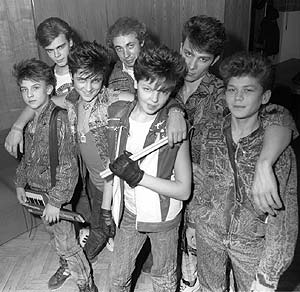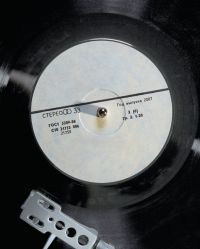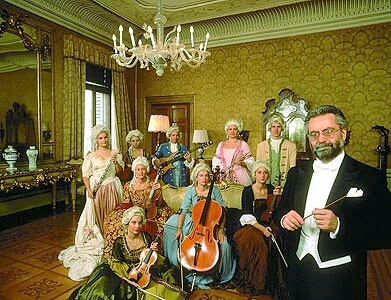Quartet
 In music, a quartet is an ensemble consisting of four musicians or singers. The most common among them was a string quartet consisting of two violins, viola and cello.
In music, a quartet is an ensemble consisting of four musicians or singers. The most common among them was a string quartet consisting of two violins, viola and cello.
It originated in the XVIII century, when amateur musicians, gathering together in the evenings, spent their leisure time playing the stringed instruments. Over time, outstanding musicians began to join the quartets. Such ensembles performed at the courts of the princes, in the noble living rooms, and from the XIX century. – in concert philharmonic halls. Now the string quartet is one of the most common types of chamber ensemble.
However, there are still a number of varieties of quartets. According to the composition of the instruments, quartets are homogeneous (bowed, woodwind) and mixed (for example, bowed with an oboe or piano). The quartet consisting of three stringed string instruments – violin, viola, cello – and the piano is called piano. Vocal quartets are female, male, mixed (soprano, alto, tenor, bass, etc.).
Quartet is called not only a musical group, but also a piece of music for four performers.
The quartet – a work for 4 instruments – the leading genre of chamber music. Quartets of homogeneous instruments (2 violins, viola, cello) and mixed (stringed, with wind or piano) are common.
Essays for the string quartet began to be created from the middle of the 18th century, that is, when such groups already formed. The quartets of the great classical composers of the past and of our days occupy an honorable place in the treasury of world chamber music. Among them are the works of J. Haydn, V. A. Mozart, L. Beethoven, F. Schubert, R. Schumann, I. Brahms.
The first to use quartets was the composers of the Mannheim School. In Italy, many string quartets were written by Antonio Sacchini (1730–1786) and Luigi Boc-kerini (1743–1805).
The first quartet of Haydn was created in 1755. Until the 80s. XVIII century. The quartet retained the suite form characteristic of divertissements and serenades. By the end of the XVIII century. Haydn (83 string quartets, including 6 “Russians”) and Mozart (23 string, 2 piano quartets) finally approved the sonata cycle form in the quartet.
This form is retained in his quartets and Beethoven. He owns 16 quartets, including 3 “Russians” (op. 59, 1807), written on themes of Russian folk songs. In the last 5 quartets (op. 127 – E-flat major, op. 130 – B-flat major, op. 131 — in C sharp minor, op. 132 — A minor, op. 135 – F major) are a new ideological and philosophical the content has led to a significant complication of the form.
Quartets took a prominent place in Schubert’s work (19 string quartets; 3 of them were lost, the 7th is best known, with variations on the theme of his song Death and Girl – D minor, 1824), Schumann (3 string quartets, piano quartet), Mendelssohn (6 string quartets, 3 piano quartets), Brahms (6 string quartets). From the 2nd half of the XIX century. string quartets became the favorite chamber genre of most composers of various schools; Quartets of French composers Chausson, Debussy, Ravel are widely known. Bright color characterizes the Grieg quartet (2, 2 nd not finished), Sibelius (2, 2 nd – “Intimate voices”).
String quartets were written by Polish composers Moniuszko (2), Shimanovsky (2), Kazimierz Sikorsky (b. 1895), Zbigniew Tursky (b. 1908), Vitold Rudzinsky (b. 1913). Outstanding quartets created by composers George Enescu (3), Konstantin Silvestri (b. 1913), Bedrich Smetana (2), Leoš Janáček (2), Joseph Souk (2), Bela Bartok (6) (1st —1908, 6- th — 1939), Paul Hindemith, Semuel Barber (b. 1910), Benjamin Britten (b. 1913), Veselia Stoyanov (b. 1902), Claudiu Santora (b. 1919), Josip of Slovenia (1896–1955), Petar Konovich (b. 1883). In Russia, the string quartet began to be cultivated from the XVIII century. In this genre they wrote: Bortnyansky, Alyabyev (3 strings and 1 for 4 flutes), Dargomyzhsky (2), Rubinstein (10). A new stage in the development of the quartet genre was the works of Borodin (2 string quartets; the 2nd with Nocturne), Tchaikovsky (3, 2 with Andante cantabile), Taneyev (9).
The Glazunov Quartet 7 is distinguished for its fine craftsmanship (the 3rd, the Slavic, is most famous). The string quartet occupies a significant place in the work of Soviet composers. The quartet of Myaskovsky (13), Prokofiev, Glier, Shebalin is famous. The largest contribution to quartet music was made by Shostakovich – the author of 10 quartets.
The founders of the Russian classical quartet are A. P. Borodin and P. I. Tchaikovsky. Tchaikovsky quartets are characterized by a mighty scale, passionate temperament and at the same time sincerity (especially their slow parts). So, the well-known second part of the First String Quartet was based on the Russian song “Sat Vanya on the Couch”. Both Borodin quartets are distinguished by their poetry, calm, balanced lyricism, and picturesque. Russian quartet music owes much to S. I. Taneyev and A. K. Glazunov. Soviet composers made an enormous contribution to the quartet heritage.



